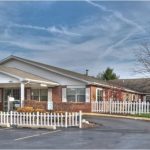Results from a recent survey* on senior housing indicate that investors favor a continuum-of-care model as most desirable. The survey, conducted by JLL of Chicago, is the first of what is planned to become a semi-annual survey of real estate and senior housing investors.
Cambridge Realty Capital Founder and Chairman Jeffrey Davis agrees with the survey’s findings. “It is certainly a model of care that we are seeing more of in our business,” he stated.
The survey was administered to more than 250 participants, each with a stake in the senior housing industry, including lenders, developers and operators. Participants were asked to rate eight different living/care facility models according to how desirable an investment each was.
56 percent of respondents said that facilities with independent living and assisted living (with or without memory care) under the same roof were “very desirable” when it came to investment dollars. Another 30 percent rated that same model to be “extremely desirable,” putting the continuum-of-care model well ahead of the seven other types.
On the flip side, the freestanding nursing facility came out as the least desirable model of care for future investing. A full 56% of respondents called this model “not at all desirable” as a prospective investment.
The survey also identified four key trends within the senior housing market: steady occupancy in senior housing, decelerating (but still growing) rental rates, a growing divergence between performance levels in independent and assisted living, and a slowing down of sales transactions overall.
“Certainly these results fall into line with our experience over the past couple of years,” Davis echoed. “These are definitely trends to keep an eye on as we enter into the second quarter of 2018.”
So what is it about the continuum-of-care model that investors find so appealing? “It’s a sustainable model,” Davis contended.
Unlike nursing facilities, it doesn’t rely on a constant turnover of sick individuals to keep beds filled. Neither does it require the same level of skilled staffing necessary to keep a freestanding nursing home running.
With skilled staff (like nurses) being ever more difficult to find and even harder to retain, it’s no wonder that today’s investors are shying away from the nursing facility. “A continuum-of-care facility with independent living and assisted living under one roof can function with few or no nurses and other skilled staff,” Davis points out.
Not only that, but seniors themselves as well as their family members favor this model as being one of the least disruptive to the senior’s lifestyle. A senior who is ready to transition from a house to a simpler dwelling, but still fully capable of being independent, can opt for this type of facility. Then, as his or her needs change over the years and the individual requires greater levels of assistance, the needed services are already in place. No move is required.
Although it may be labeled as a “trend,” the continuum-of-care model is certainly not a “fad.” Says Davis, “it’s here to stay, and I expect we’ll see more and more of it over the coming years.”
* From Seniors Housing: Investor Survey and Trends, JLL, 2018.
Download the full report here.


